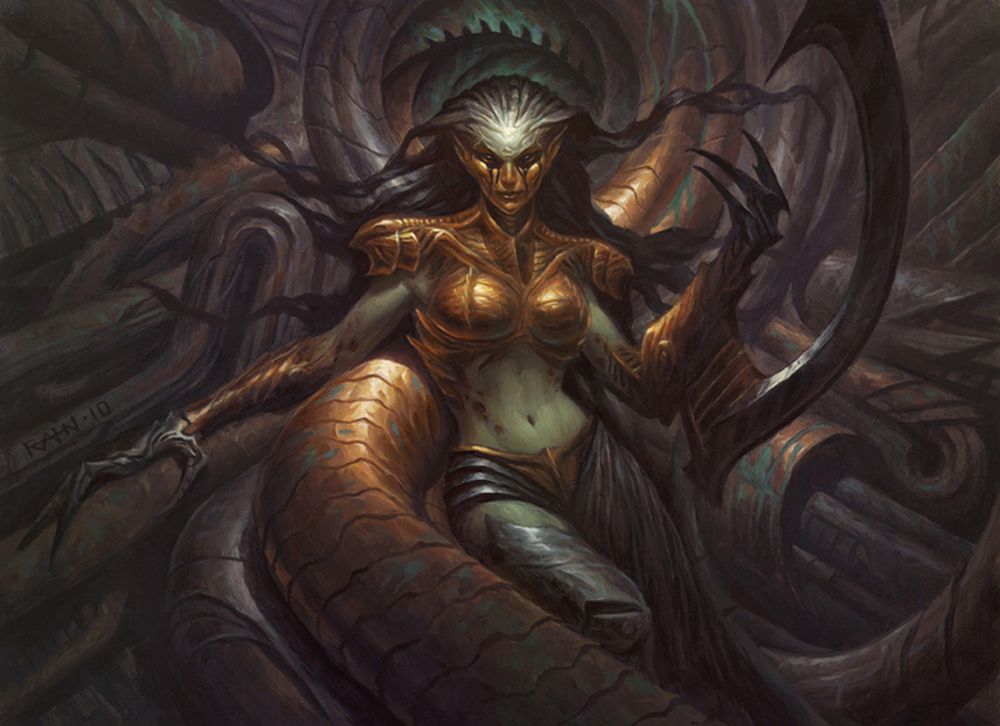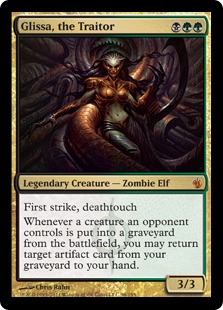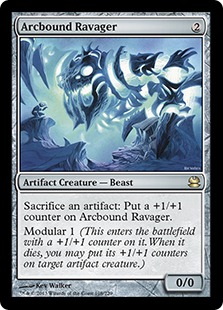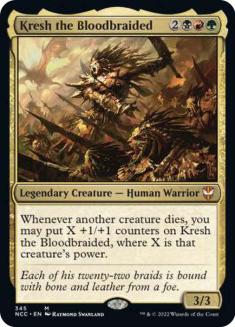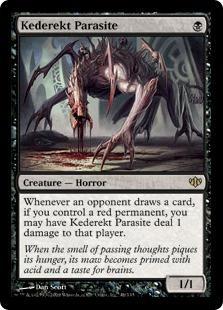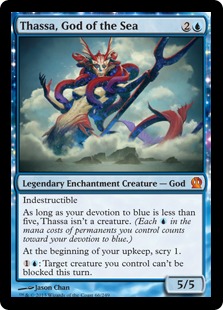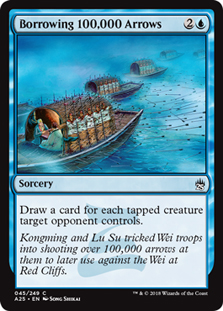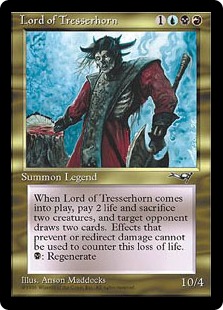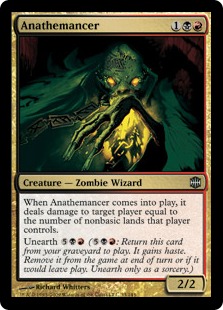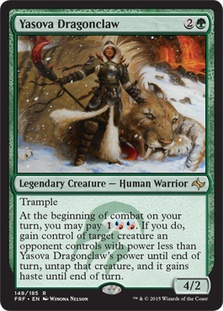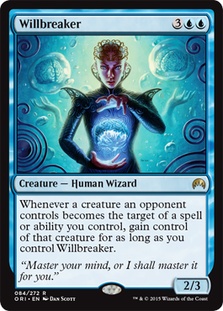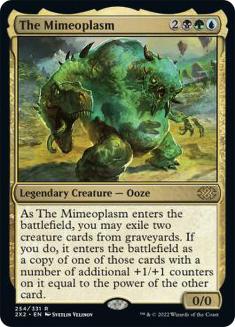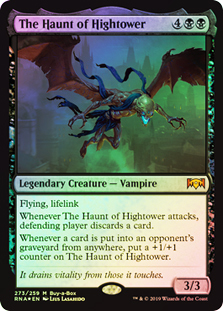I go to a fair number of shows during the course of a year, and the selection process for which decks to bring along is always a thing. I like to pack a spread of decks across themes while maintaining a feeling for my signature style. That process ends up with some decks from my suite getting left back at home with some frequency. I’ve decided that Magic Fest Reno is the show for the underappreciated and underplayed.
What won’t be underplayed in Reno is the star power in the room. Fellow Commander Rules Committee (RC) member Scott Larabee will be there. From the Commander Advisory Group (CAG) we’ll have five-tool threat Olivia Gobert-Hicks and World’s Most Casual Player Shivam Bhatt. In fact, it’s Olivia’s hometown, so there are lots of special activities planned. The guest list isn’t limited to Commander dignitaries, though. You can check out the list here.
The one deck I can’t avoid bringing to a show is the now-famous You Did This to Yourself. Not only does it always provide the epic moments we’ve all come to love from the format, it’s just fun to see people react to some of the outside-the-box cards it runs. After that, I don’t really need to pack other specific decks, so long as I have a good spread across the power level spectrum. This one will be all about the decks that don’t get to make the trip that often (and possibly have never made one).
Our ChannelFireball hosts recently tweeted a helpful guide they’re trying out for the show to help folks find the same power level groups. All of these fall in the 5-6 range.
Glissa, Glissa
Inspired by a deck built right after Glissa, the Traitor came out by Monday Night Gamer and close friend Keith Bogart, this deck, like most Glissa decks, is all about the artifacts. And killing stuff so that you can do the artifacts again. I have a good time playing it, but understand that it can occasionally be pretty grindy, having more than enough ways to take over a game but perhaps lacking enough big, splashy finishing moves. It’s one of the decks on this list that has the best interaction, since interfacing with opponents’ board states is what makes the engines run. It’s good at destroying every kind of permanent (including annoying lands, via Ark of Blight), although like many decks it’ll have to take care of planeswalkers via combat damage.
One of my favorite offensive weapons is the Arcbound suite (Arcbound Crusher, Arcbound Bruiser, Arcbound Fiend, Arcbound Ravager, and Arcbound Reclaimer). Clearly Arcbound Ravager is the well-known superstar, but the others provide some compelling choice and battlefield-dependent options. I’m also pretty fond of the headgear duo of Helm of Possession and Helm of Obedience. And who doesn’t love making Goats with Trading Post (or just in general, really)? Trading Post’s last two abilities are also very saucy in this deck. From there, it’s the normal Glissa / Executioner’s Capsule kind of tricks, although the deck simply refuses to fold to graveyard hate, which might be my favorite part about it. I’ll confess to loving graveyard recursion and I’m willing to shrug when I occasionally get blown out by a timely Bojuka Bog, but I’m also fine with not needing the shrugs.
Kresh Do-Over
Part of the for now-suspended Do-Over Project, this Kresh the Bloodbraided deck was initially made from the next 99 cards (thanks to Abe Sargent for the idea). There were no repeats from the original save for basic lands. The lists have diverged in the interim. I didn’t pay particular attention to whether or not cards went into the original that were in the Do-Over, but it’s unlikely. With my rule that I only put one copy of new cards into the whole deck suite, a new card obviously can’t go into both. New cards are generally the only way decks get updated, but sometimes I just get a wild hair about playing a certain card and there is a deck that it fits into best.
The deck is a mishmash of cards that I think are cool to play. There isn’t a defined strategy (beyond getting counters on Kresh and swinging with him), so much as cards that will have to assess the battlefield state and then figure out what do to. It has some reasonable amount of graveyard recursion but isn’t going to roll over if the yard goes away. There are some cards that are pretty obvious, like those that sacrifice creatures you control such as the underutilized Doomgape and Shard Phoenix. There are strategically obvious cards like Massacre Wurm. There are also a few cards that people have to pick up and look at every time, like Tsabo’s Web and Kederekt Parasite (which won its fair share of games in Standard for me when Five-Color Control was a thing). The deck isn’t great at stopping other decks from doing their thing, so it’s better in a lower-powered environment.
I’ll also bring along two other Jund commanders to play the deck with: Korvold, Fae-Cursed King and Prossh, Skyraider of Kher. I’ve done the test before with Prossh, in order to see if it simply functions as kind of bonkers leading a deck it wasn’t designed to lead (the answer is yes) and want to do the same with Korvold. The fact that it’s a Kresh deck means that Korvold will probably be fine, but I’m interested to see.
Thassa, God of Merfolk
It was really convenient as I was laying out the Chromatic Project to build a deck of each possible color combination (back before we got four color commanders) that I knew the Theros Gods were coming out. I delayed building the monocolored ones until they arrived, and then had a solid foundation on which to construct that part of the building.
When it came to Thassa, God of the Sea, the thematic choice was obvious. I didn’t want a big sea monsters deck with her (although there are some, like Kederekt Leviathan, Shipbreaker Kraken, and Stormtide Leviathan), so the least annoying Merfolk deck ever was what I went for. I even tried to keep as many of spell names as possible consistent with the sea theme, so we have cards like Coastal Piracy, Spreading Seas, Deluge, Crush of Tentacles, and Breaking Waves. There’s even a bunch of boats on Borrowing 100,000 Arrows.
I also tried to go there with the nonbasic lands, like Halimar Depths; Lonely Sandbar; Minamo, School at Water’s Edge; and Remote Isle. Clearly Nykthos, Shrine to Nyx is a flavor fail. I’m not all-in on the card name thing, but reasonably close while still making a playable deck. One not-in-theme card that’s stronger than you might imagine is Citanul Flute. It’s better when you’re searching up inexpensive creatures, but most Merfolk fit the bill.
I’m always surprised at how well the deck plays. On medium-powered tables, it often sets the pace of play with creature after creature, and then protects them with enough countermagic backup. It’s not the best at recovery and it doesn’t have much recursion at all, but it recovers reasonably well from creature destruction because it draws a fair number of cards. Other than the Cyclonic Rift, the deck is like many mono-blue decks—if it doesn’t counter a noncreature threat, it has a little trouble dealing with it. The tempo advantage can make up for that problem, but not in every case (Humility, for example, would be a kick in the pants).
Zombies of Tresserhorn
Only one of the two Zombie decks could make it, so Gisa and Geralf will have to wait until next trip. The real deciding factor here is that Lord of Tresserhorn was one of my earliest not-Phelddagrif decks—second or third, fourth at most. The lines from so many years ago blur.
I don’t recall it actually starting out as a Zombie tribal deck, just a way to take advantage of the downsides that everyone’s favorite 10/4 faces. What we might have seemed a drawback way back then—namely, letting an opponent draw cards—we see today as more of a political tool. In some situations, it might be a way out of a tricky spot, since the deck is somewhat removal-light. The fact that it’s a Zombie certainly suggests a tribal approach. They’re certainly a tribe that’s extremely good at coming back from the graveyard again and again. The intervening years have given us so many choices, not to mention fully branching into a new color, that two different decks are required. It’s telling to look at some of the creature choices still left from the earliest versions of the deck and compare them to more recent additions.
The deck wins by (no surprise) casting and/or recurring a bunch of Zombies. One of the best finishers is a cycled Gempalm Polluter, especially on the back of either Army of the Damned or Zombie Apocalypse. Anathemancer will win the occasional Commander game was well. The deck occasionally gets there with commander damage, but it’s been a hot minute since I remember doing it. It loses when decks have good removal that includes graveyard hate or simply doing things that Grixis has always had trouble dealing with. It’s a pretty straightforward deck, but generally fun to play in a medium- to low-powered environment.
The Threat of Yasova
This particular deck, or at least its commander, Yasova Dragonclaw, has in the past been very salty about not getting to come to events. It’s time to make it up to her. Borrowing creatures for value is fun, and people are less upset about it when you give them back.
This deck doesn’t mind returning them, but endeavors to let that happen as infrequently as possible. If they don’t get killed in combat, the deck likes to sacrifice them to enchantments such as Evolutionary Leap, Goblin Bombardment, Greater Good, and the two that people keep telling me they’re going to have to consider playing, Perilous Forays and Shivan Harvest. It also has some spells to do the deed, such as Momentous Fall, Fling, Grab the Reins, Perilous Research, and Read the Runes. It then seeks to either buff Yasova’s power through via Sword of Fire and Ice or Sword of Light and Shadow in order to borrow larger creatures and/or create extra combat steps via Aggravated Assault or Savage Beating.
My most favorite interaction in the deck is between Yasova and Willbreaker. Whether or not you’re going to borrow a creature, Yasova’s ability triggers at the beginning of combat. That trigger requires that you target something. When you do, Willbreaker triggers and you get the creature if it’s still on the battlefield when the trigger resolves. It won’t get haste, since Yasova’s ability is countered due to the target being illegal (it’s no longer a creature an opponent controls), but that’s small price to pay for getting the creature as long as Willbreaker stays on the battlefield. The aforementioned enchantments and spells will help out in most cases (which don’t involve split second) that would make Willbreaker go away.
Another favorite interaction is to combine Yasova with Erhnam Djinn against a green player. At the beginning of your upkeep, the Djinn requires giving a creature forestwalk until end of turn (yes, creatures have come a long way since 1990-whatever). Give it to the creature you intend to borrow, and the downside becomes an upside.
The deck is always fun to play and can create any number of wild game states. It has some decent comeback capability, but for the most part is focused on doing its thing before other things can be done to it. The only downside to bringing it is that there’s too much overlap between it and Admiral Beckett Brass to bring both.
The Mill-Meoplasm
The deck that started out as having some mill strategies in order to get things into the graveyard so that The Mimeoplasm has stuff to copy has over time morphed into a deck that’s focused on killing via milling out people. It has the backup plan of still doing stuff with the commander, but for the most part it’s about chewing through other players’ decks and daring them to draw cards. It also has the backup backup plan of Rise of the Dark Realms, which can end a game pretty quickly.
The alternate sub-theme of the deck, in honor of my friend Brian David-Marshall, is the Spiders. With Ishkanah, Grafwidow and Spider Spawning, even milling myself becomes a viable option. The other Spider card is one that BDM dismisses as “too easy,” and to some extent I agree with him: Arachnogenesis. I believe in staying in school, eating your vegetables, and playing your Fogs, but I get how Spider Fog plus Ishkanah can feel a little dirty.
The card that I’m looking forward to which I haven’t yet seen from the deck (despite playing it a number of times) is The Haunt of Hightower. It and Vulturous Zombie interact quite nicely with the things the deck does, all the way from Mesmeric Orb to Mindcrank. Of course, because it’s a Sultai deck, it also contains Villainous Wealth, because why wouldn’t you play that card if you can? It’s hardly broken, but it’s almost always amazeballs.
I’ll also bring one more deck, so we’ll see what tickles my fancy right before I pack. Any way that it breaks down, Magic Fest Reno is going to be a grand time for Commander players, from the spells we’ll sling to the conversations we’ll have. If you’re interested, I’ll have a signup sheet at the table every day so that folks don’t have to wait around if they don’t want to. If you’re in the Command Zone, please stop by to say hello, even if we might not be able to get in a game. Seeing old friends and making new ones is always the best part of the show.
Visit my Decklist Database to see my Signature Decks, the Chromatic Project, and more!

